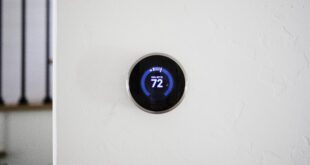The green revolution is influencing sustainable business changes. Companies may target a broad audience of eco-consumers by shrinking their carbon footprints. They also can help meet global sustainability goals by adopting low-impact energy sources.
Business owners can switch to renewable energy and retrofit their buildings to increase renewable energy compatibility. There are seven ways companies may ditch fossil fuels for emission-free electricity sources.
Use On- or Off-Site Energy
Individuals can switch to renewable energy by finding a reliable power source. Large office buildings in America use about 20 kilowatt-hours (kWh) of electricity. They also rely on 24 cubic feet of gas for each square foot of space.
Office building owners may hire renewable energy professionals to determine their potential electricity outputs. Some buildings can’t produce enough clean energy on-site to support their consumption rates. Business owners can also acquire renewable energy from off-site sources to meet electricity demands.
Some building owners prefer creating electricity on-site to access financial benefits. Individuals can access one of the most affordable energy sources by installing rooftop photovoltaic (PV) panels. They may also acquire tax incentives by purchasing personal renewable energy systems.
Choose the Best Renewable Energy System
Another step toward accessing renewable energy for office buildings is finding the best systems. The solar industry is booming, and more individuals are installing rooftop panels.
However, some regions are more compatible with solar power production than others. PV panels can overheat, which makes them less efficient in the south. Solar systems achieve optimal energy outputs at 77 F. Panels’ efficiency rates decline significantly when they exceed 149 F.
Office buildings in hot climates may benefit from wind power instead of solar. Some southern states are the largest producers of wind energy. Nearly 20% of electricity in Texas comes from wind turbines.
Other regions may benefit from installing micro-hydropower systems to access clean energy. Business owners that situate their office buildings near flowing water sources can produce hydroelectricity. Hydropower is one of the most affordable electricity sources worldwide.
Replace All Gas-Powered Devices
Business owners can improve their offices’ compatibility with renewable energy by adopting electric appliances and systems. Some buildings rely on gas-powered devices, which increase their reliance on fossil fuels. Individuals can swap their gas water heaters for electric versions to reduce carbon emissions.
Electric water heaters rely on high-voltage electricity rods to warm their tanks. The devices are cost-efficient and compatible with renewable electricity.
People can also swap their gas-powered heating, ventilation and air conditioning (HVAC) systems with electric versions. HVAC systems use nearly 35% of a building’s energy supply. Business owners may significantly decrease greenhouse gas emissions by installing electric HVAC devices. Connecting their temperature control systems to renewable energy supplies may eliminate related emissions.
Individuals may also swap their gas-powered stoves and dryers to increase an office space’s sustainability. Companies can improve their eco-consumer appeal and lower utility costs by transitioning from fossil fuels.
Add More Windows
Business owners may also increase their offices’ compatibility with renewable energy by enhancing natural lighting. They can add more windows throughout their buildings and significantly decrease their utility costs and stress on their renewable energy supplies.
Office building owners may also replace conventional windows with solar versions to expand the renewable power supply. Solar windows contain transparent panels, which produce electricity using PV technology. This decreases lighting costs and increases solar power production.
Install Smart Systems
Business owners can also prevent stress on renewable energy supplies by installing smart systems. Smart thermostats can monitor HVAC energy uses. They rely on the Internet of Things (IoT) to access real-time weather predictions and upload data to the cloud.
Office managers may access HVAC data from their smartphones and control indoor climates. Business owners can also preserve their renewable power supplies by installing smart monitors. The devices connect to a company’s energy meter and help decrease electricity waste.
Apply for Renewable Energy Tax Credits
The next step in switching to renewable energy is applying for tax incentives. Business owners can support their solar panel purchases and installation costs by acquiring the federal solar tax credit. They can receive a 22% credit on their purchase and installation fees by applying before 2023.
Business owners may also receive tax incentives for their wind turbine purchases. They are eligible for a 30% credit when investing in offshore wind projects. They can also receive up to 2 cents for each kWh of onshore wind power they produce.
Follow the Leaders and Switch to Renewable Energy
Business owners can assess other companies’ switch to renewable energy before making their transition. Microsoft and American Airlines produce all their electricity from renewable power sources. The companies use various clean energy sources and production locations to generate enough power. They utilize on- and off-site renewable systems to expand their electricity supplies.
Office buildings may access 100% of their electricity from renewables by taking similar measures. Owners can install rooftop solar panels and purchase offshore wind power to minimize their fossil fuel reliance.
 Alternative Energy HQ solar power for homes, wind energy, and bio fuel issues
Alternative Energy HQ solar power for homes, wind energy, and bio fuel issues









2 comments
Pingback: How Can Office Buildings Switch to Renewable Energy?
Pingback: B20 Biofuel - Alternative Energy HQ